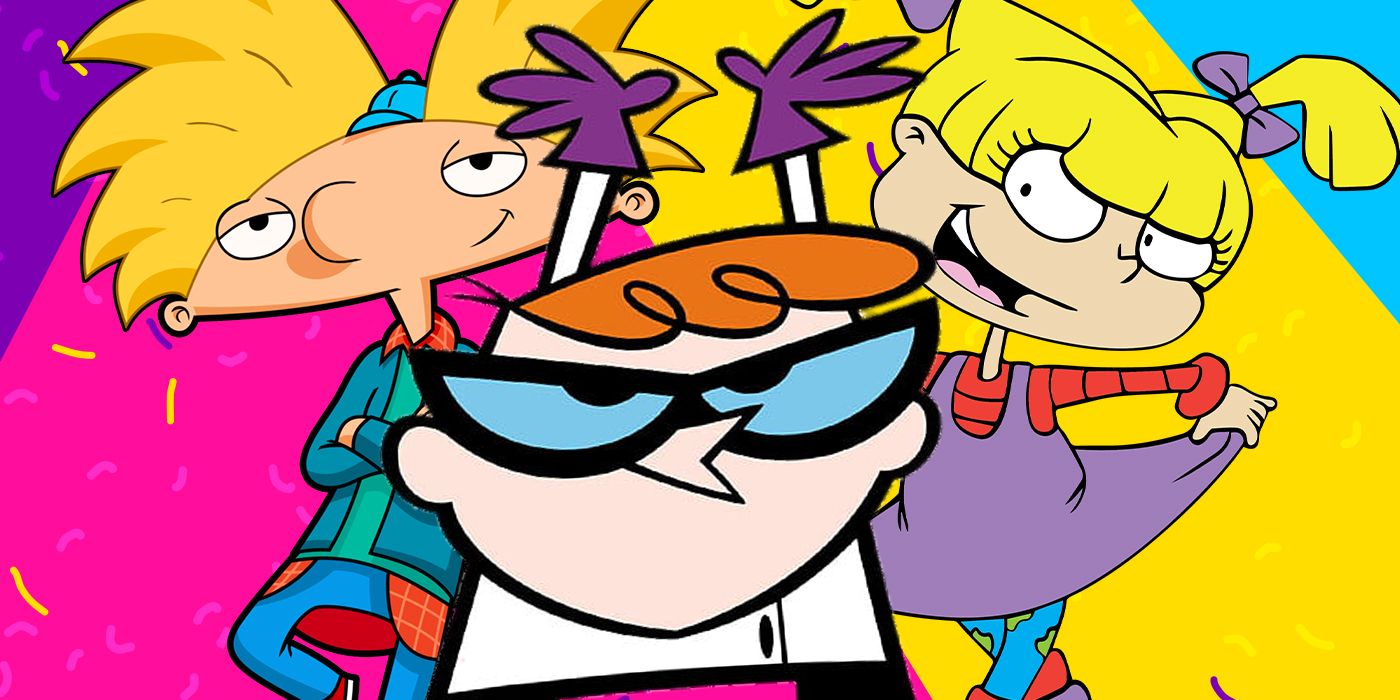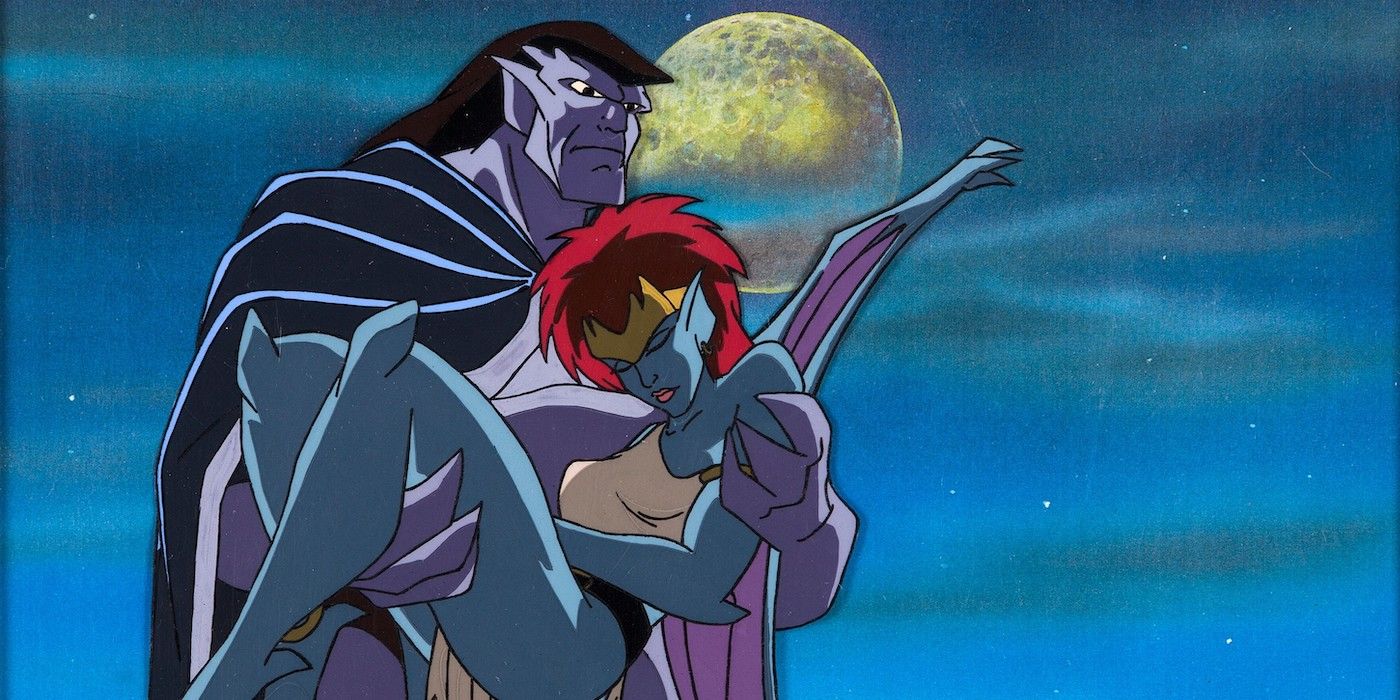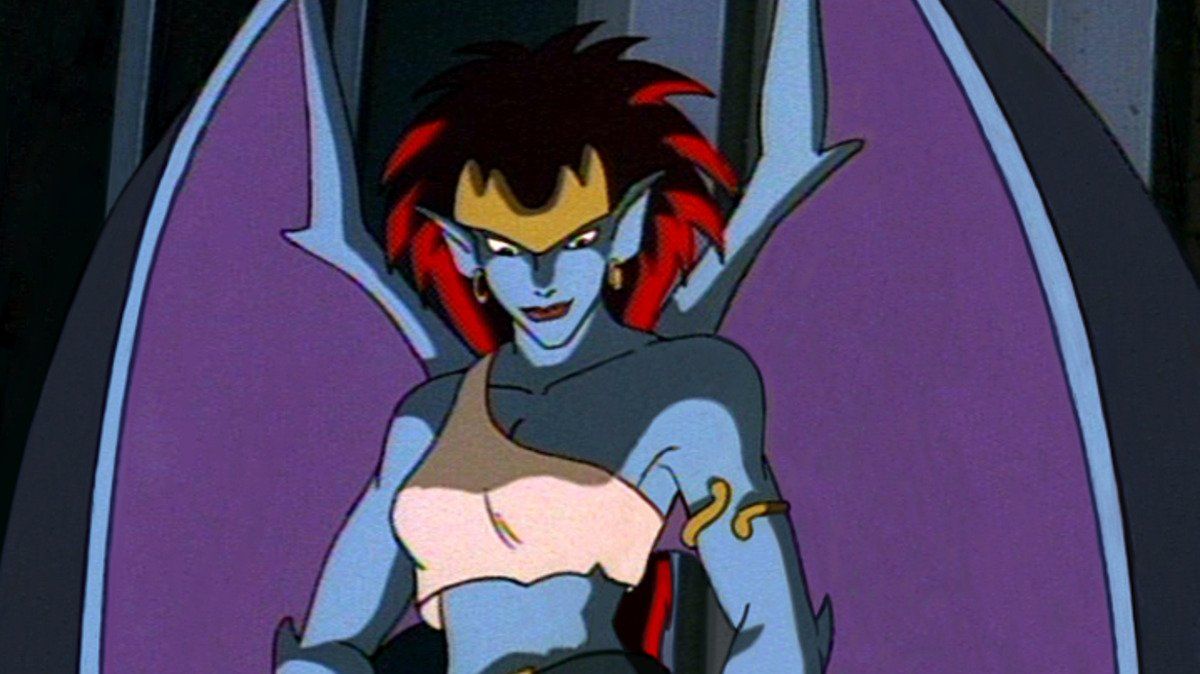Imagine coming home after a long school day in 1994. Backpack off, shoes off, and, before the front door closes, your butt is on the couch and the TV is on. Flipping through the channels, you see it on the Disney Afternoon programming block: Gargoyles. It’s dark and brooding, but also at times tender and sentimental. These “monsters” aren’t so scary when they’re not trying to be. They wax philosophical and struggle with the inherent mistrust between their kind and humanity. It’s unlike anything you’ve ever seen before. Yet has surprisingly familiar roots in the works of William Shakespeare.
Well, almost. Gargoyles was in good company with shows like Batman: The Animated Series and X-Men airing on Fox Kids. All of them are dynamic, action-packed cartoons geared toward young viewers, but they also have a self-serious tone and a flair for the dramatic in most episodes. For Disney at the time, however, Gargoyles was a stark departure from their usual fare. It was airing alongside shows like DuckTales, Goof Troop, and Bonkers in its programming block. No shade, but Gargoyles was simply operating on a different level — even compared to cartoons with a similar tone.
How Was Disney's 'Gargoyles' Influenced By Shakespeare?
Gargoyles series creator and co-producer, Greg Weisman, is a former English composition and writing teacher. It should come as no surprise that his presumed fluency in classic literature would bleed through in any of his works. For Gargoyles, Weisman undeniably drew heavily from the works of William Shakespeare. Several recurring characters are even named after Shakespeare's characters — Macbeth, Oberon, Puck, Titania — proving Weisman was inspired by the Bard and was not interested in disguising his allusions. But the show goes beyond name-checking characters: Weisman clearly constructed Gargoyles with Shakespearean themes baked into its narrative DNA from the start.
A theme that drives the first story arc of Gargoyles and continues on throughout the rest of the run is the conflict between appearance and reality. Summarized best by Shakespeare’s line, “All that glitters is not gold” from The Merchant of Venice, this first theme is often used throughout his plays and books. The premise of A Midsummer Night’s Dream hinges on young lovers lost between the boundaries of this world and the fairy realm, in which they are confronted by illusions and false identities. In Othello, Iago befriends and backstabs everyone around him, keeping his true motivations to himself at the end of his labyrinthine game of 4-D chess. Whether it’s the people surrounding the main characters that cannot be trusted or reality itself, Shakespeare spins rich yarns rooted in the idea that appearances are often deceiving.
The titular gargoyles hail from a medieval Scottish castle, populated by the humans they are sworn to protect from invading forces. The gargoyles are betrayed by these humans, but not by the ones expected. The court wizard named Magus (Jeff Bennett) is animated with suspiciously wicked expressions, and although he is ultimately responsible for sending the Gargoyles into 1990s New York City, it is the trusted captain whom the gargoyles fight alongside that sells them out to the enemy. From this moment on, the leader of the gargoyles, Goliath (Keith David) never knows who he can trust. When Xanatos (Jonathan Frakes) awakens them for his own ends, his loyalties are similarly opaque. Goliath is rightfully suspicious of Xanatos, but his amiability and the fact that he revived them garners him the benefit of the doubt. Of course, just like Iago, Xanatos proves deceitful and betrays Goliath and his clan.
Even within the gargoyle family, it can be hard to discern appearance from reality. Demona (Marina Sirtis) — another allusion to a Shakespeare character, Desdemona — turns her back on her love Goliath and the other Gargoyles to wage war on humanity. In an early episode, Brooklyn (Jeff Bennett) is persuaded by Demona to believe that humans cannot be trusted, and he helps her cast a mind-control spell on Goliath. In another, Lexington (Thom Adcox-Hernandez) confuses television actors for real-life heroes, and in doing so he naively endangers his friends. Time and again while the gargoyles adjust to an unknown world, they struggle with whom to trust and what to believe. The shrewdness with which the gargoyles must navigate the world is a permeating feeling, and it prompts the development of a sharp and discerning outlook in young viewers.
What Are Common Themes Shakespeare's Plays & 'Gargoyles' Share?
Another recurring theme that crops up in both Shakespeare and Gargoyles is the relationship between power, ambition, and corruption. Those who seek to disrupt or displace those in power often fall prey to the follies of power themselves. Hamlet seeks revenge on his father’s murderer, a quest that leads to mutually assured destruction. In Macbeth, Lady Macbeth pushes her husband to murder the king of Scotland and assume the throne himself. No character in Gargoyles embodies Lady Macbeth’s iron will like Demona. Much like Lady Macbeth deems Macbeth too weak-willed and frail to take the Scottish throne, Demona believes Goliath doesn’t have what it takes to protect his own kind. She is responsible for orchestrating the tragedy at Castle Wyvern, believing that, with the humans out of the way, the gargoyles will prosper. She schemes behind Goliath’s back for what she believes is beneficial for the gargoyles, but instead, her plan results in most of their kind being slaughtered.
Unlike Lady Macbeth’s fate, Demona lives on to continue her crusade, choosing to blame humanity rather than admit her hand in the destruction of her own kind. Demona’s relationship with Goliath is more complex from this angle; she wants to convert him to her way of thinking, and she believes that by destroying the humans Goliath foolishly seeks to protect they can finally be together. It is an added layer of morally gray characterization that elevates the story beyond myopic ideas of good and evil.
Xanatos’ villainous schemes in Gargoyles revolve around his desire to command a gargoyle of his own, preferably more than one. From building remote-controlled mechanized gargoyles to cloning them, Xanatos is constantly intent on exploiting the gargoyles, all the while maintaining a strange, neighborly relationship with them. The gargoyles never quite know when Xanatos is behaving as a friend or a foe. Even the act of inviting the gargoyles to his wedding is part of a ploy to open a gateway through time and space. While known for his machinations in the way of Iago or Don John, Xanatos’ fate is closer to the latter’s minion, Borachio, in Much Ado About Nothing. After aiding and abetting Don John in his attempts to ruin the reputation of his rival, Borachio fesses up and gives the game away. In doing so, he is redeemed and welcomed into the good graces of the audience. Likewise, Xanatos eventually ends his rivalry with the gargoyles and authentically embraces his role as their benefactor.
Lastly, Gargoyles wouldn’t truly feel Shakespearean without a romance between two star-crossed lovers. Over the course of the series, Goliath and the group’s human detective friend, Elisa (Salli Richardson) slowly grow feelings for each other. Being of different species makes them both hesitant to acknowledge their attraction. Goliath and Elisa being born of two different worlds is reminiscent of the “two households, both alike in dignity” in Romeo and Juliet — the Capulets and the Montagues. Though they don’t openly feud, humans by and large are fearful of the gargoyles, and the gargoyles are mistrustful of the humans. The interspecies romance is a bold leap for Disney. Even the Beast turns human by the end of Beauty and the Beast. Coincidentally, in the episode where Goliath and Elisa start having feelings for each other, Goliath becomes human and Elisa becomes a gargoyle through a magic trick played by Puck (lifted straight from Midsummer). It’s this body swap that allows the two to see past appearances, and it reinforces lessons for young viewers about how otherness is nothing to be feared.
Although Shakespeare's romances are often ill-fated, Goliath and Elisa make it to the end of the series with their relationship intact, though Demona attempts to kill Elisa in a jealous rage several times. Weisman also employs a Twelfth Night love triangle with a human love interest for Elisa, which prompts Goliath to confront his feelings and share in their first kiss. Before all is said and done, Weisman incorporates Shakespeare’s signature trope: a faked death. Elisa is caught in the crossfire of a battle and is believed dead by a grieving and vengeful Goliath. While this is not the most high-brow device employed in the show, it is an effective way of heightening the stakes during the second season finale. From Romeo spiraling out of control at the sight of merely sleeping Juliet to Claudio submitting himself to Hero’s father at the news of her death, it’s a tried and true trick to force a protagonist into action or to spur them to change.
Why Is Disney's 'Gargoyles' Timeless?
Gargoyles always keeps its eye on the ball with its storytelling, emphasizing rich characterization and thought-provoking narratives that subvert the expectations of young viewers. Weisman remixed and repackaged many recurring themes used in classic Shakespeare literature without ever tipping the show into the territory of edutainment, a category that the show’s demographic might find patronizing in their action cartoons. After the end of the show, Weisman went on to work on The Spectacular Spider-Man, Young Justice, and other cartoons that bear his stylistic mark of smart, dignified storytelling for a young audience. Gargoyles helped pave the way for small-screen animation to be regarded as a serious storytelling medium. It proved that the complex and sophisticated story beats of classic literature can be used in children’s programming, not as playful satire or direct education, but to enrich a dramatic work of fiction. Gargoyles’ success in this regard cements it as a timeless classic, partly because its creator was well-versed in the tactics used by another storytelling master centuries prior. The whole series is streaming on Disney+, so go see for yourself.




